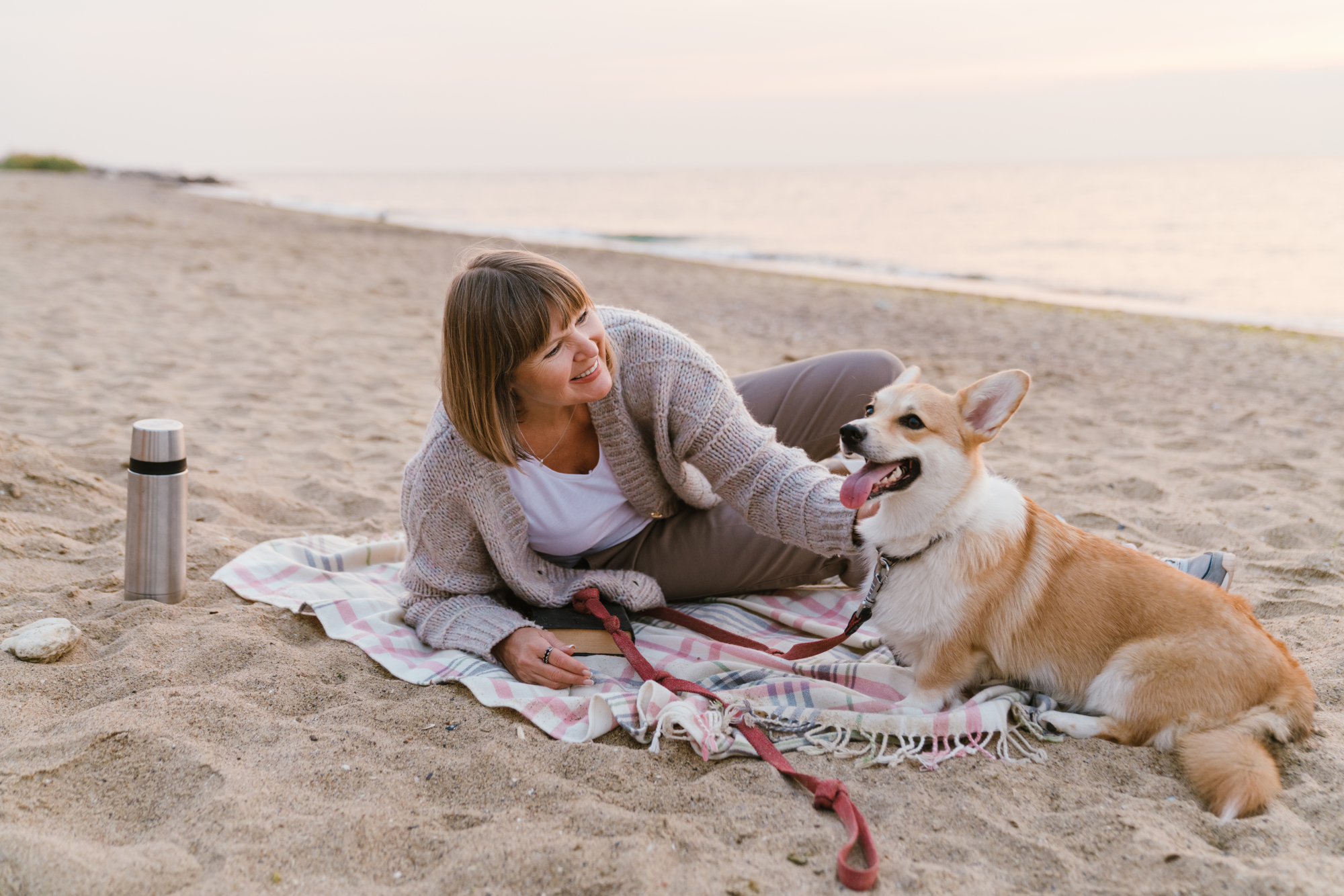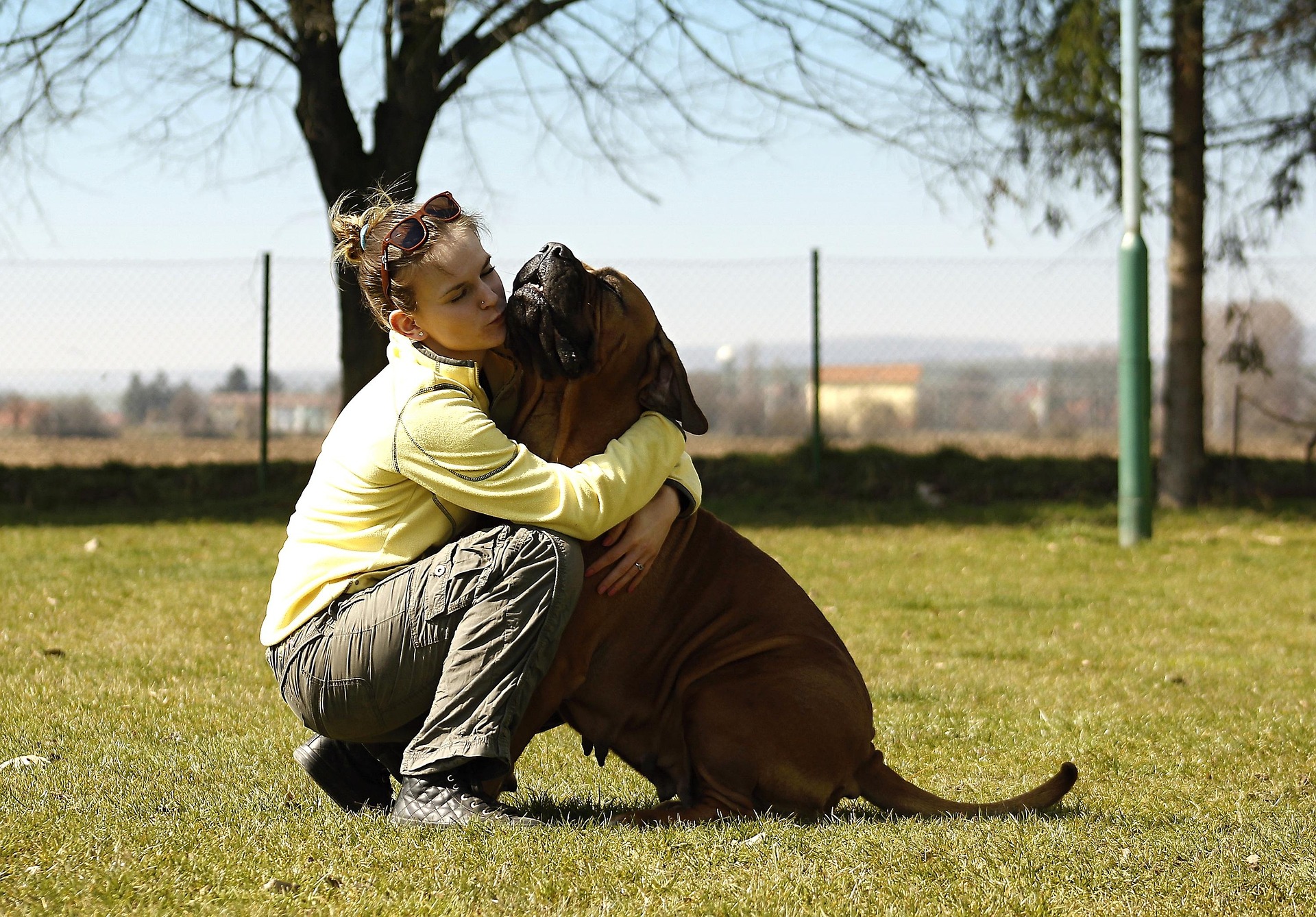For tens of thousands of years, humans and dogs have had a long-standing symbiotic relationship. They’ve helped us find food, protected us from predators, and provided much-needed companionship. So it’s clear that humans and dogs have an intertwined relationship. It can be difficult to discuss the history of one without discussing the other. This long history between us and our dogs carries on today, but not only when it comes to choosing a pet.
These days, fewer of us need to hunt to survive, or be protected as we spend the night in the wilderness. However, dogs are still helping us in an extremely important way: therapy and emotional support. Although any dog owner will tell you how helpful a dog is when they’re feeling down, there’s one group in particular that benefits from the inherent kindness and loyalty of a dog: our Canadian veterans.
A Brief History of Service Dogs
To understand the amazing impact service dogs can have on today’s veterans, we should take a look at the history of dogs helping humans out. Although we’ve co-existed with domesticated dogs for thousands of years, there’s evidence that they’ve been working in a service role for almost as long.
For instance, a piece of art discovered in Pompeii was discovered depicting a dog guiding a blind man. This depiction dates all the way back to 74 CE, during the rule of the Roman Empire. This is the first known example of a dog guiding a blind person. Other examples have been found from across the world, illustrating hundreds of years of dogs helping humans navigate their disability.
In 1780, the Paris hospital Les Quinze-Vingts began training dogs to guide blind people for the first time, formalizing the service role for the first time. From here, more and more dogs were specifically trained for this task until they became indispensable.
During the first World War, dogs played a crucial part in supporting troops on both the British and German sides. Whether it was delivering supplies or messages, leading medics to wounded troops, or keeping an eye out for enemy spies, dogs proved that they could support humans in more ways than previously thought. After the war ended, humans still made use of service dogs. Germany was the first nation to assign guide dogs to their veterans after World War I, pairing up around 4000 blind veterans with a faithful companion by 1927.
That same year, an American dog trainer named Dorothy Harrison Eustis wrote an article about the German guide dogs in The Saturday Evening Post, an American magazine. By this point, Eustis had been working for a few years in Switzerland, training dogs for the police and military. After the article was published, she received a letter from one Morris Frank, a blind man in America who couldn’t believe what he’d heard about Germany’s guide dogs. He asked her to train him a dog, and to teach him how to train them himself, so that he could help the thousands of other blind Americans become self-sufficient. Eustis agreed, and trained a dog for Morris, who spent the rest of his life in the company of guide dogs (all of which were named Buddy). Eustis would go on to open an academy for training guide dogs in the United States, which inspired a movement across North America and Europe to do the same.
By this point, it was clear that dogs had a lot to offer when it came to helping people with disabilities. However, it’s only in the past fifty years that the modern training process has become the norm, allowing people from across the world to gain the advantage of working with a guide dog. What’s also changed in the past fifty years is our understanding of what a service dog can help with, particularly in regards to our veterans.
Of all the wounds that soldiers sustain when serving in active combat, few have been as poorly understood as post-traumatic stress disorder, or PTSD. Because research on this mental illness is still in its infancy, we don’t know everything about helping veterans battle PTSD. However, research over the past few decades has suggested that service dogs have a crucial part to play in treating this mental illness.
How Service Dogs Can Help Treat PTSD
In a study conducted by the US Department of Veteran Affairs, it was found that around 10% of veterans studied experienced depression, and another 10% struggled with anxiety. PTSD affects 11-20% of soldiers who saw combat, depending on which conflict they served in, and still more struggle with MST, or military sexual trauma. These mental illnesses can be extremely difficult to handle on one’s own, and are commonly linked to suicidal impulses, self-destructive behaviour, and difficulty with social adjustment.
Today, there are many organizations that train service dogs and connect them with veterans. Although these are also concerned with helping veterans after physical injuries, the growing knowledge of PTSD means mental health is becoming more of a priority for these organizations. Knowledge of other mental illnesses is growing in tandem with research on PTSD, allowing us to gain a better understanding of how to help people who have experienced trauma.
The National Institute of Health found in a study that interacting directly with an animal can monumentally improve a person’s socialization, as well as help stabilize a person’s mood. Furthermore, studies in the field of psychology have researched the effects of animals on people suffering from PTSD, and found that it can reduce symptoms by 80% simply through basic interactions. This is amazing news, but why does it happen?
Studies have shown that when we interact with an animal, our brains release oxytocin into our systems. This chemical is sometimes called the “love hormone,” or the “cuddle hormone,” as it’s often produced when we do either of those two things, helping us to bond and build trust. When our brain releases oxytocin, we feel happier, calmer, and more at ease. It helps to mentally ground us, and can soothe the symptoms of mental illness. The most amazing thing is that these results are easily replicable – as increased levels of dopamine and oxytocin can be seen after just twenty minutes of interacting with a service dog.
For veterans struggling with high heart rates due to stress disorders, having a trusted and trained animal can actually be the difference between life and death, allowing the veteran to calm down and return to a more mentally grounded state. Similarly, studies have suggested that supplying veterans with a service animal can help them feel less alone, potentially reducing the disproportionately high rate of veteran suicide.
All types of animals have been successfully used to treat patients struggling with previous trauma. From dogs and cats, to horses, and even iguanas, animals of all kinds have been shown to positively impact veterans dealing with trauma after returning home. Although the science is still in its early stages, initial results are so promising that the Department of Defense has invested $300 000 in research for animal-assisted veteran therapy.
Guiding Our Veterans into the Future
It’s true that science can’t definitively say that there’s a link between service animals and recovery from PTSD or MST. However, subjectively, there’s a strong body of evidence to show that it can make all the difference for veterans trying to readjust to civilian life. As an example, The Wounded Warriors Project has been matching veterans with service dogs for almost twenty years, helping them in their battle against mental illness.
If you ask us, having a service animal is invaluable when it comes to navigating life after trauma. As we approach Remembrance Day in Canada, we’re reminded of the countless men and women who have made unbelievable sacrifices in the course of their duties. And while remembering these sacrifices is incredibly important, it’s equally important to provide support wherever possible. Whether a veteran is returning home with an observable physical injury, or an invisible mental illness, or both, service dogs can be instrumental in helping them overcome their challenges, and guiding them into a brighter future.
Creative Commons Attribution: Permission is granted to repost this article in its entirety with credit to Hastings Veterinary Hospital and a clickable link back to this page.






